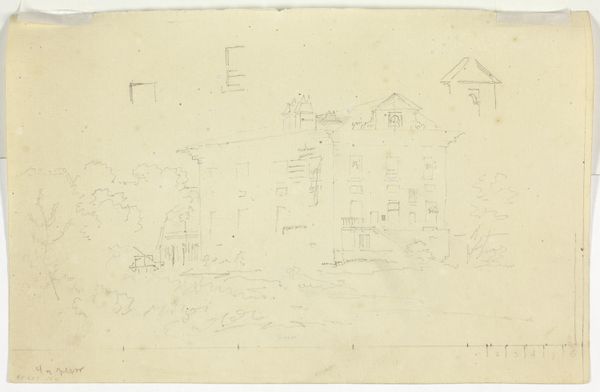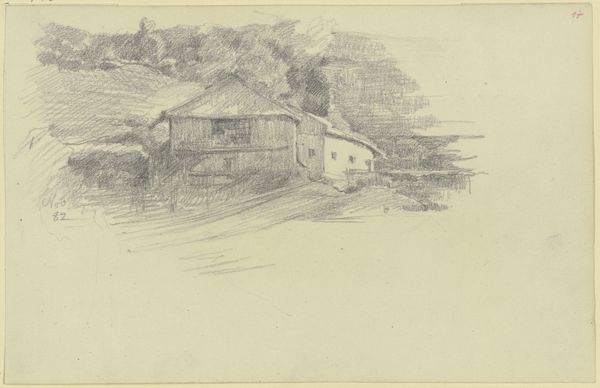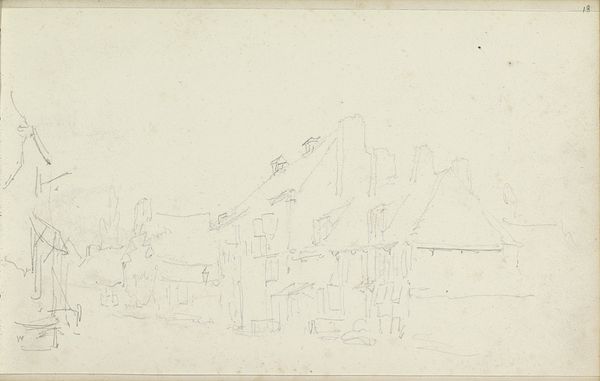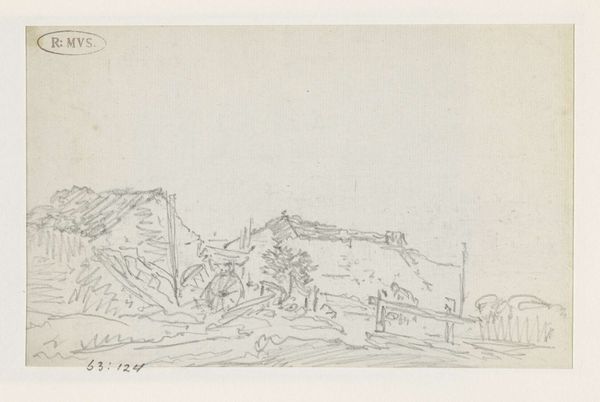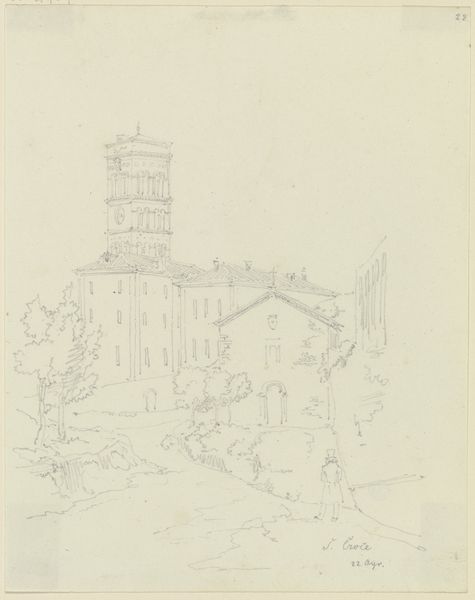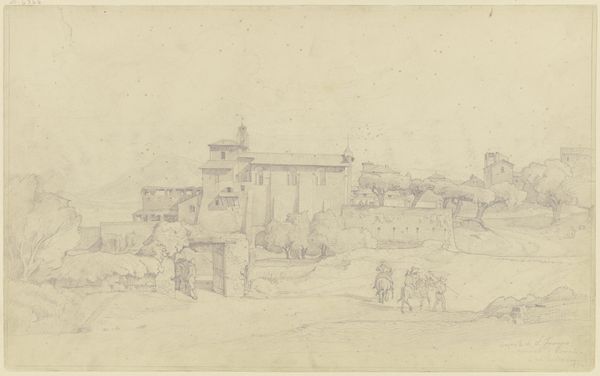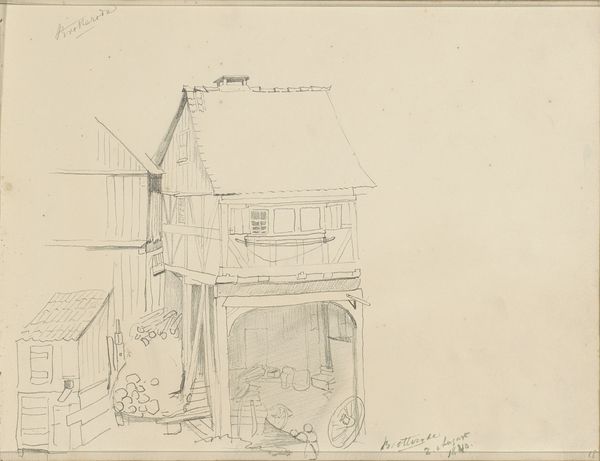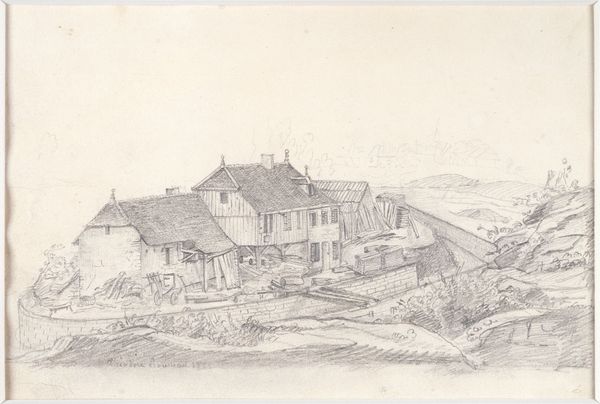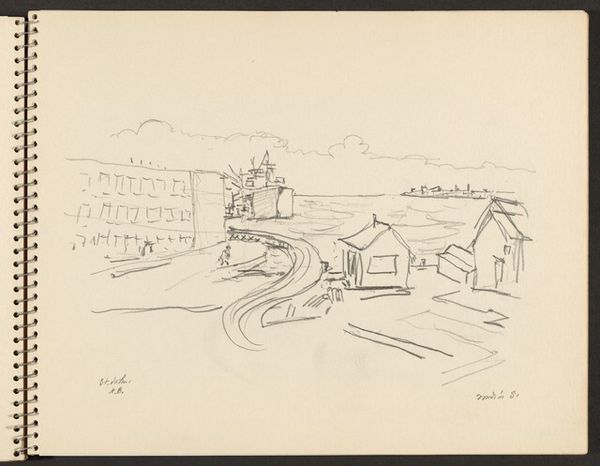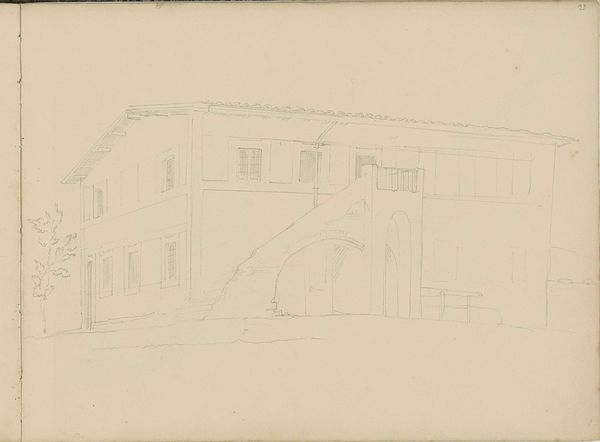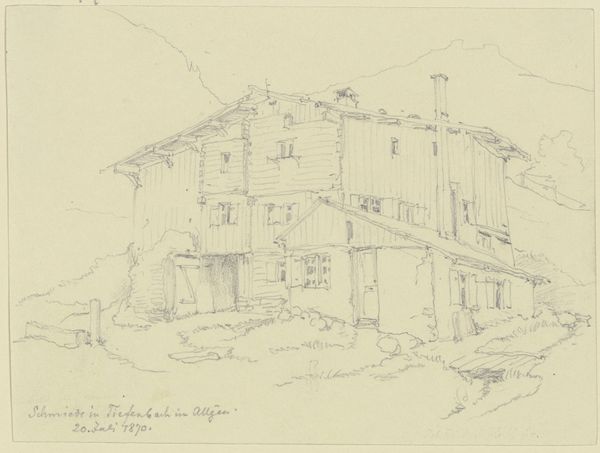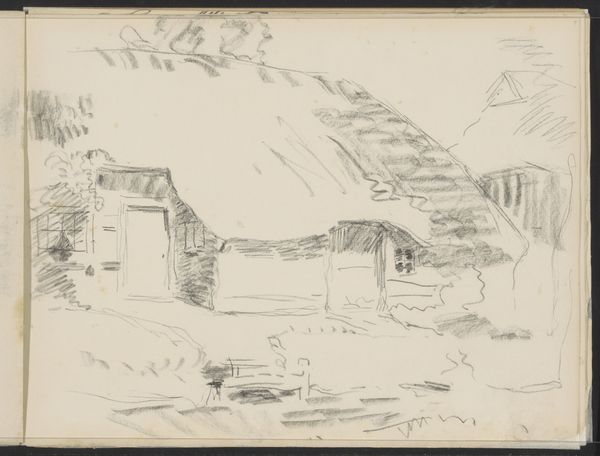
drawing, paper, pencil, architecture
#
drawing
#
landscape
#
etching
#
paper
#
pencil
#
cityscape
#
architecture
#
realism
Copyright: Public Domain
Friedrich Maximilian Hessemer’s delicate pencil drawing captures the Porta Maggiore in Rome. This ancient gate, initially part of an aqueduct, was transformed by Emperor Claudius into a monumental entrance to the city, and you can see the scale of it in relation to the surrounding buildings. Hessemer, like many artists of his time, was drawn to Rome as a center of classical art and architecture. His image creates meaning through its subtle visual codes, the weight of Roman history, and the cultural references it evokes. In 19th century Europe, the classical world was seen as an ideal, a source of inspiration for art and architecture. The image may appear conservative in its reverence for the past, but it also participates in a broader cultural project, as 19th-century institutions across Europe sought to define and preserve the classical heritage as part of a common European identity. As historians, we use a variety of resources – letters, diaries, travel guides – to understand the complex social and institutional context of art. Art’s meaning is always contingent on its time, place, and the cultural values attached to it.
Comments
No comments
Be the first to comment and join the conversation on the ultimate creative platform.
